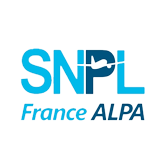
Communiqué de presse/Press Release de l’IFALPA : Entry into Force of the Montreal Protocol 2014
Following the 22nd instrument of ratification deposited with the Secretary General of ICAO, the Protocol to Amend the Convention on Offences and Certain Other Acts Committed on Board Aircraft, more commonly known as the Montreal Protocol 2014 (MP14, ICAO Doc 10034), entered into force on the 1st of January 2020.
Safety Bulletin IFALPA: New Approaches for Haneda
Due to the upcoming Olympics in Tokyo, Japan, there is a requirement to increase throughput at Tokyo’s Haneda airport. In order to achieve this throughput, it is necessary to introduce approaches to the previously unused approach Runways 16L&R. These runways have not been used for approaches previously due to noise concerns for the public. In order to appease the local public regarding the noise pollution, the JCAB (Japan Civil Aviation Bureau) has created RNP approaches and ILS approaches to runways 16L&R.
Position Paper IFALPA: Smoking and Aircrew
Cigarette smoking is the single most important preventable environmental factor contributing to premature death in the world. The high morbidity and mortality rates are due to the e ects of cigarette smoke on several diseases, but primarily on lung cancer, ischaemic heart disease, stroke, and peripheral vascular disease.
Position Paper IFALPA: Passenger Flights Carrying Deportees
There are necessary and important guidelines that crews should follow when passengers are carried who are not travelling of their own volition. Such flights often present challenging scenarios and there may be political and humanitarian viewpoints to be considered. Deportations are the result of a state judicial or administrative process. It is important to understand that Operators, Aircraft Commanders, and their crew are not involved in these decisions, nor can they be held responsible for deportees after their disembarkation at destination.
Position Paper IFALPA: Carriage of Persons on All-Cargo Aircraft
Position Paper IFALPA : It has come to the Federation’s attention that Cargo Aircraft Only (CAO) provisions are being used to prevent individuals from traveling on cargo aircraft when such aircraft carry Dangerous Goods (DG) not allowed on passenger aircraft. The CAO provisions allow types and quantities of DG on all-cargo aircraft because it was believed pilots of those aircraft had specific means of responding to DG incidents that are not normally available to passenger aircraft pilots.
Briefing Leaflet IFALPA: Sleep Apnea Information for Pilots
The prevalence of sleep apnea in adults is estimated to be 7%. In contrast, the US Federal Aviation Administration (FAA) records instances of sleep apnea in Class I medical certified pilots as only 0.5%. Sleep apnea seems to be badly under diagnosed within the pilot community. As sleep apnea results in daytime sleepiness, when left undiagnosed it can pose a significant safety risk in aviation.
Briefing Leaflet IFALPA: Malaria Information for Pilots
Malaria is a common and life-threatening disease found in many tropical and subtropical countries. Malaria is transmitted to humans by the bite of an infected female anopheles mosquito. This Briefing Leaflet provides a summary of malaria risk, notes anti-malarial drugs suitable for pilots, and recommends protection measures for pilots to consider.
Briefing Leaflet IFALPA: Medication and Flying
Even a minor illness in a pilot can cause a major problem while flying. In addition, accidents have occurred because of pilot’s disability related to disease and/or medication. Many symptoms that are negligible on the ground may worsen while flying, so in many cases the underlying illness itself is usually the major reason not to fly. Therefore, licence holders should be encouraged always to consult their AME (authorised medical examiner) before taking any medication. Quite often other physicians than AMEs show a serious lack of knowledge in the field of aviation medicine and therefore consultation with AME and not a general practitioner or other non-aviation familiar doctor is highly encouraged.
Briefing Leaflet IFALPA: Ocular Hazards of UV Exposure
Sunlight is a major source of UV radiation which can damage the delicate tissues of the eye. This briefing leaflet provides an overview of the risks of UV exposure in the cockpit and provides advice for pilots to protect their eyes.
Briefing Leaflet IFALPA: Alcohol Information for Pilots
The importance of not drinking alcohol in proximity to duty is well known among the pilot population. However, the consumption of alcohol poses risks to long term health which could have an impact on flight safety. This Briefing Leaflet expands upon and explains those risks, and provides recommendations for pilots.
